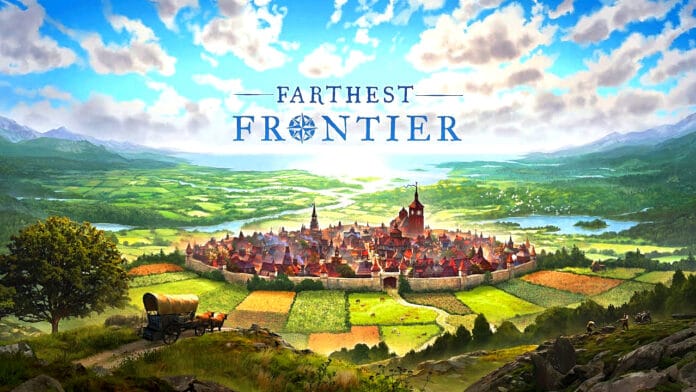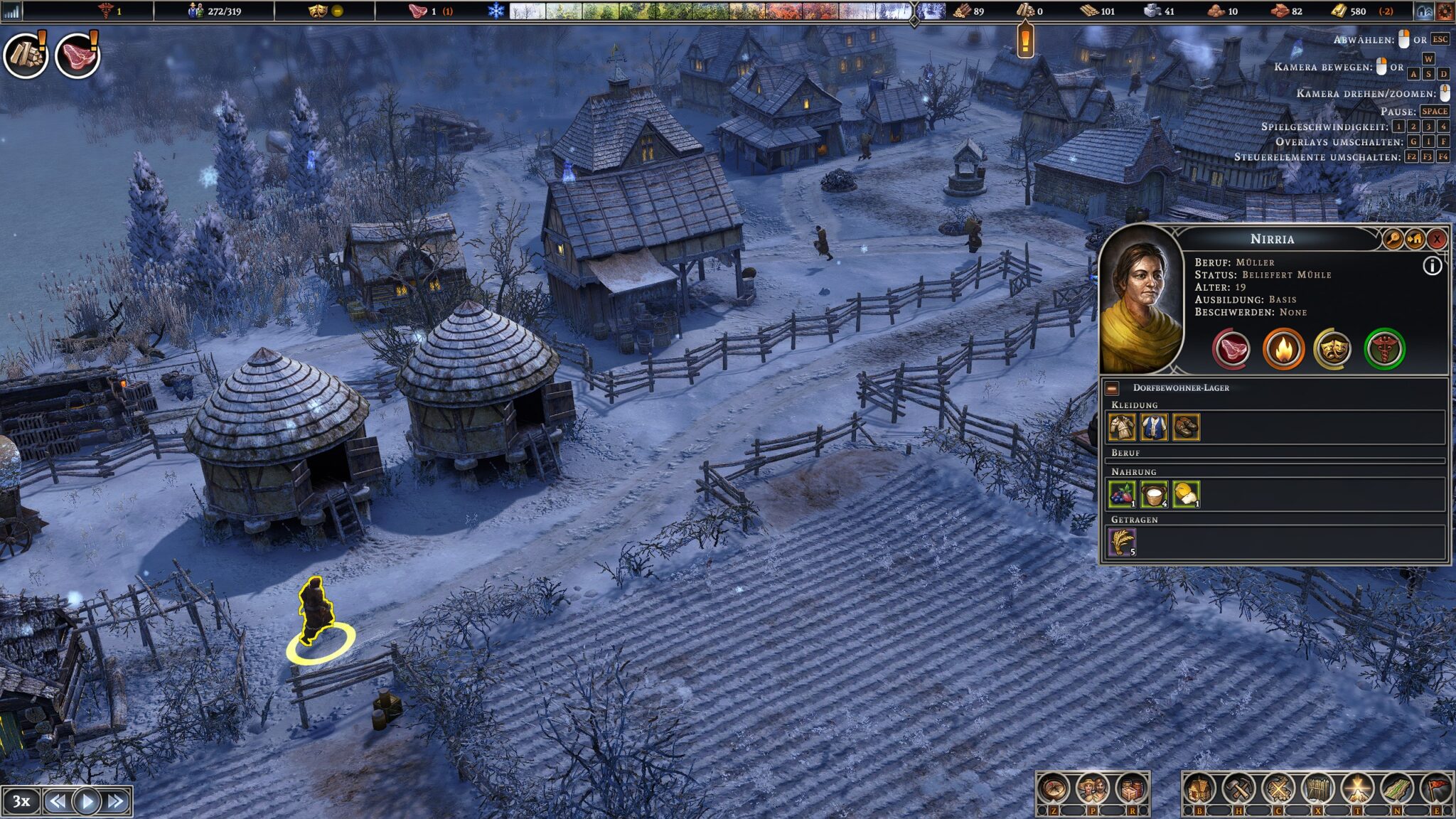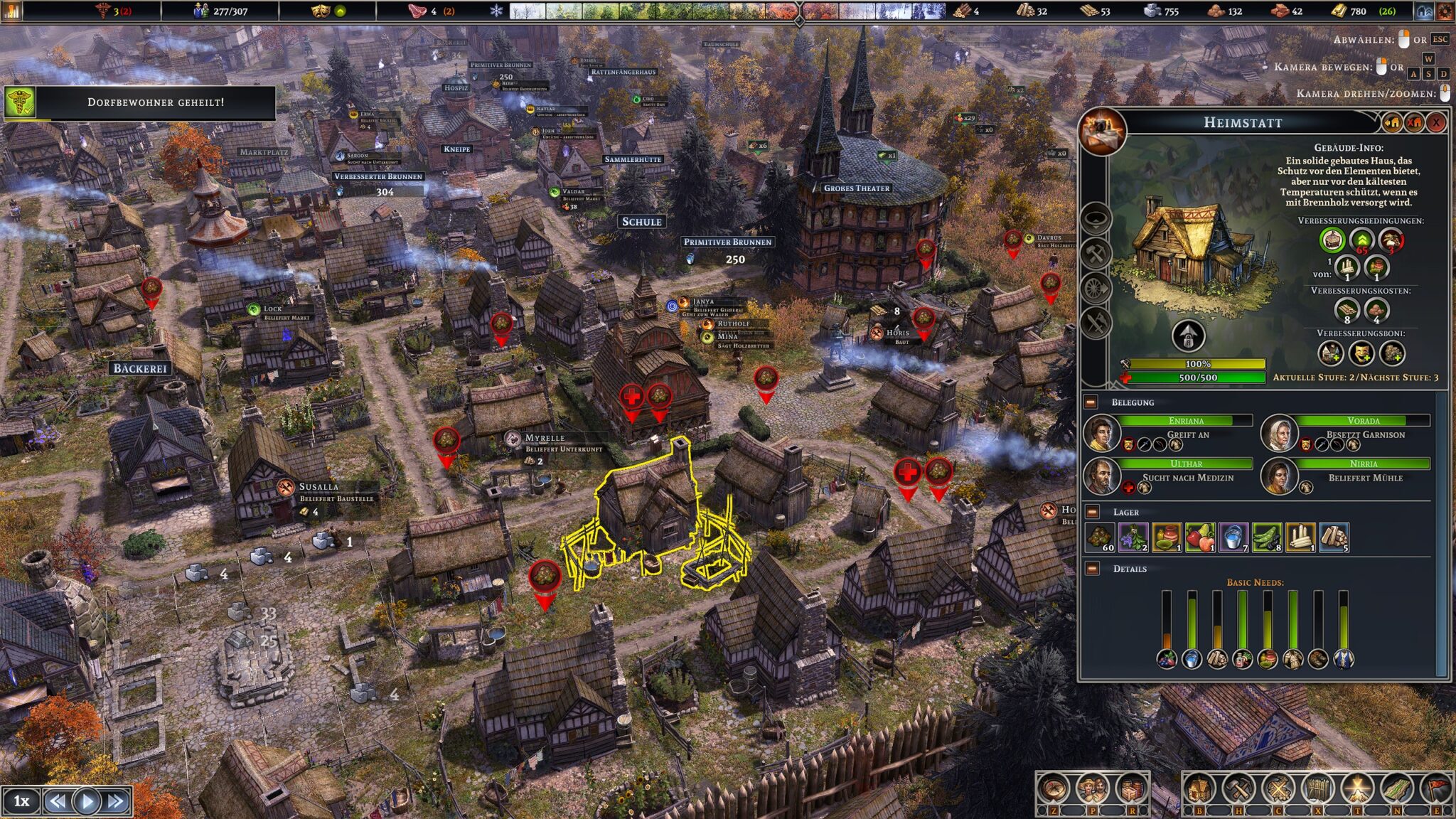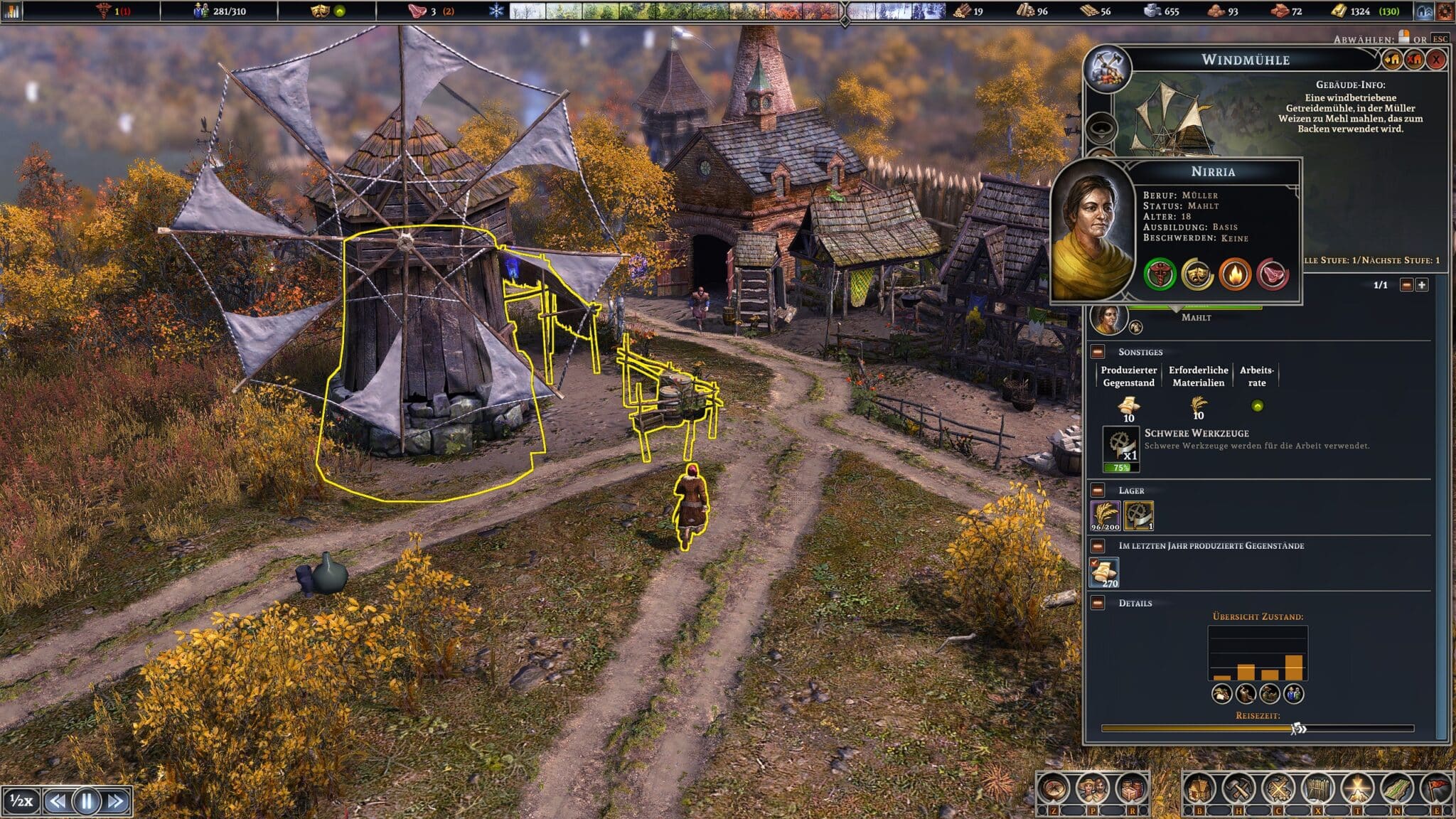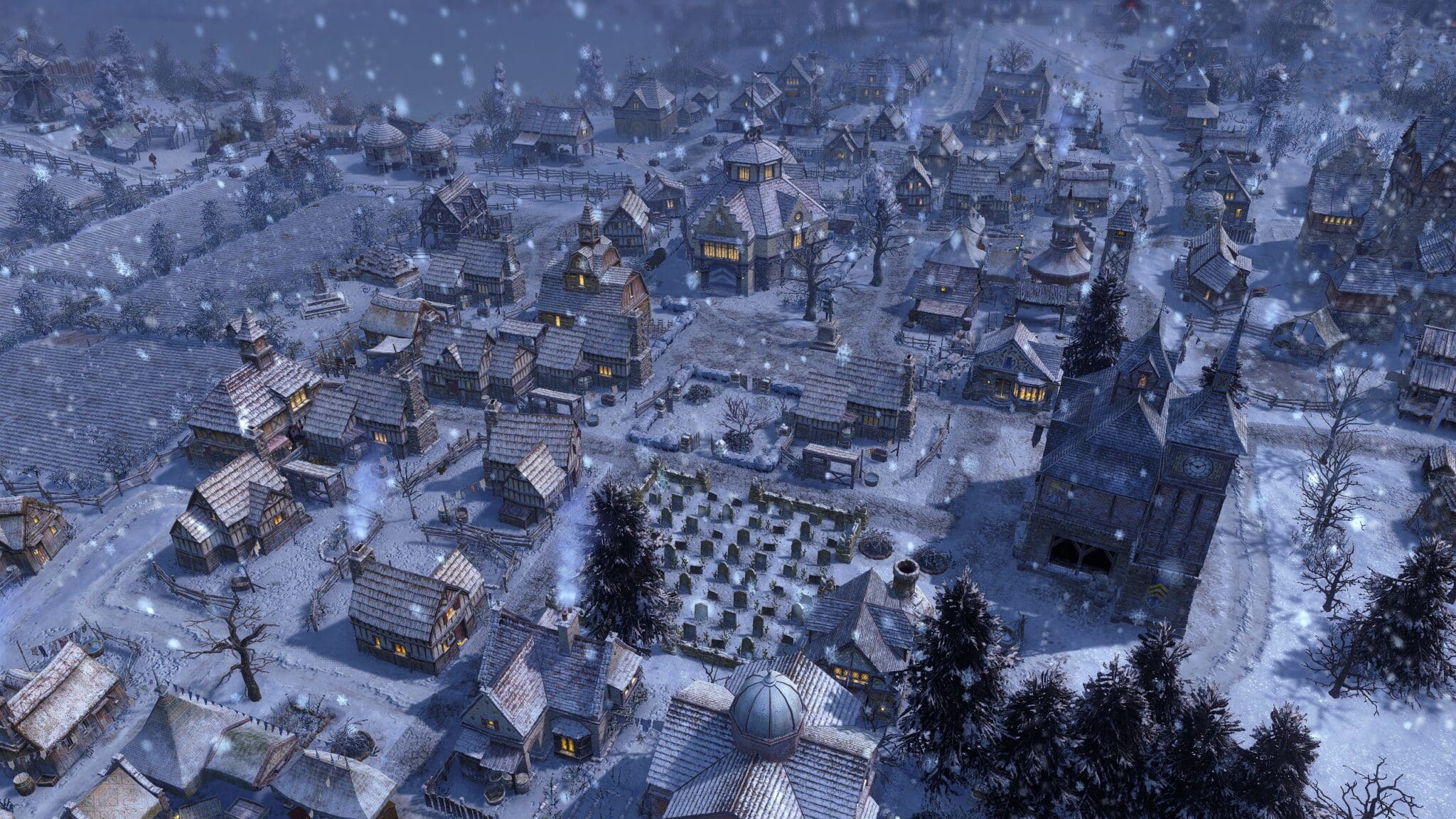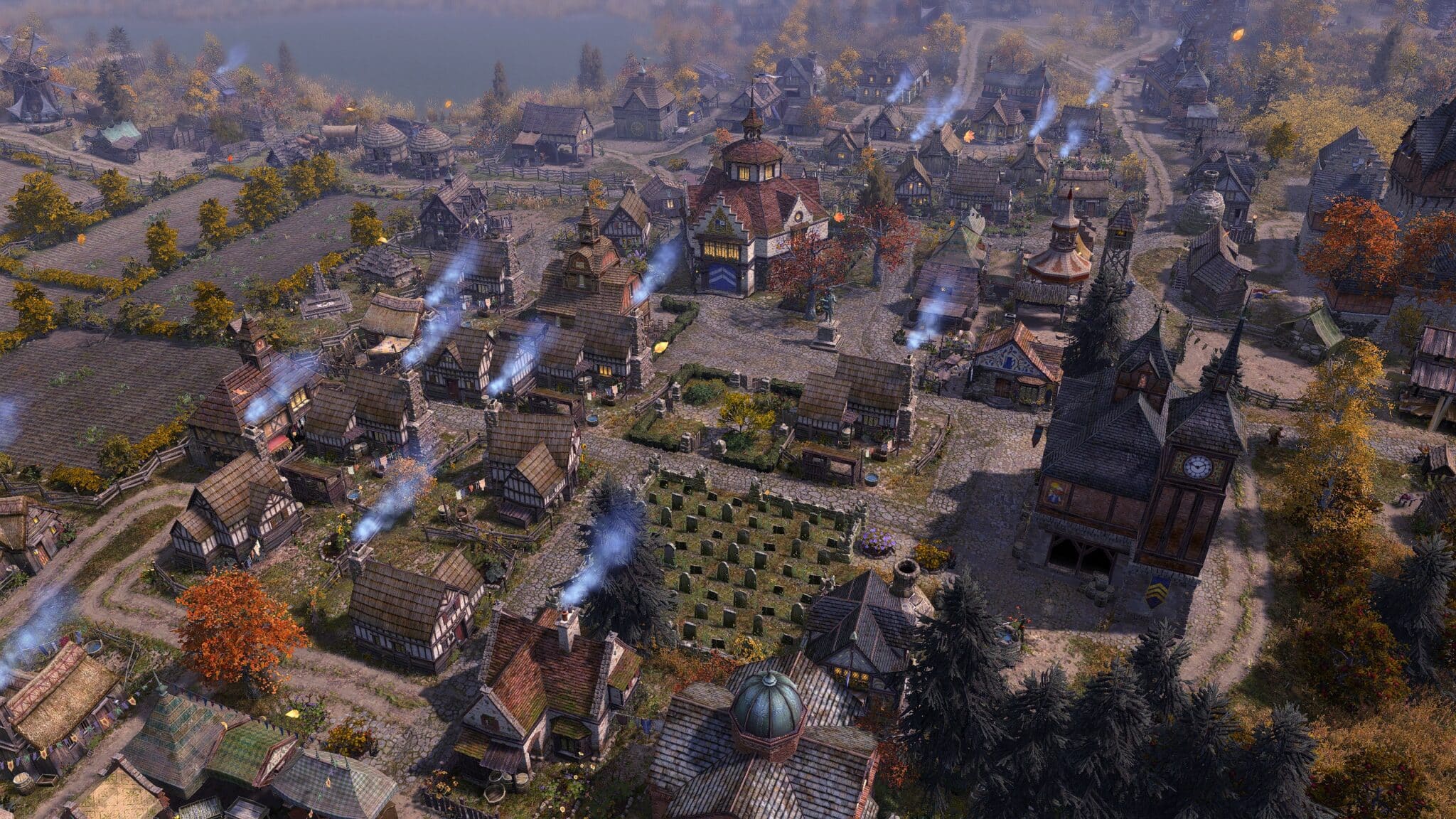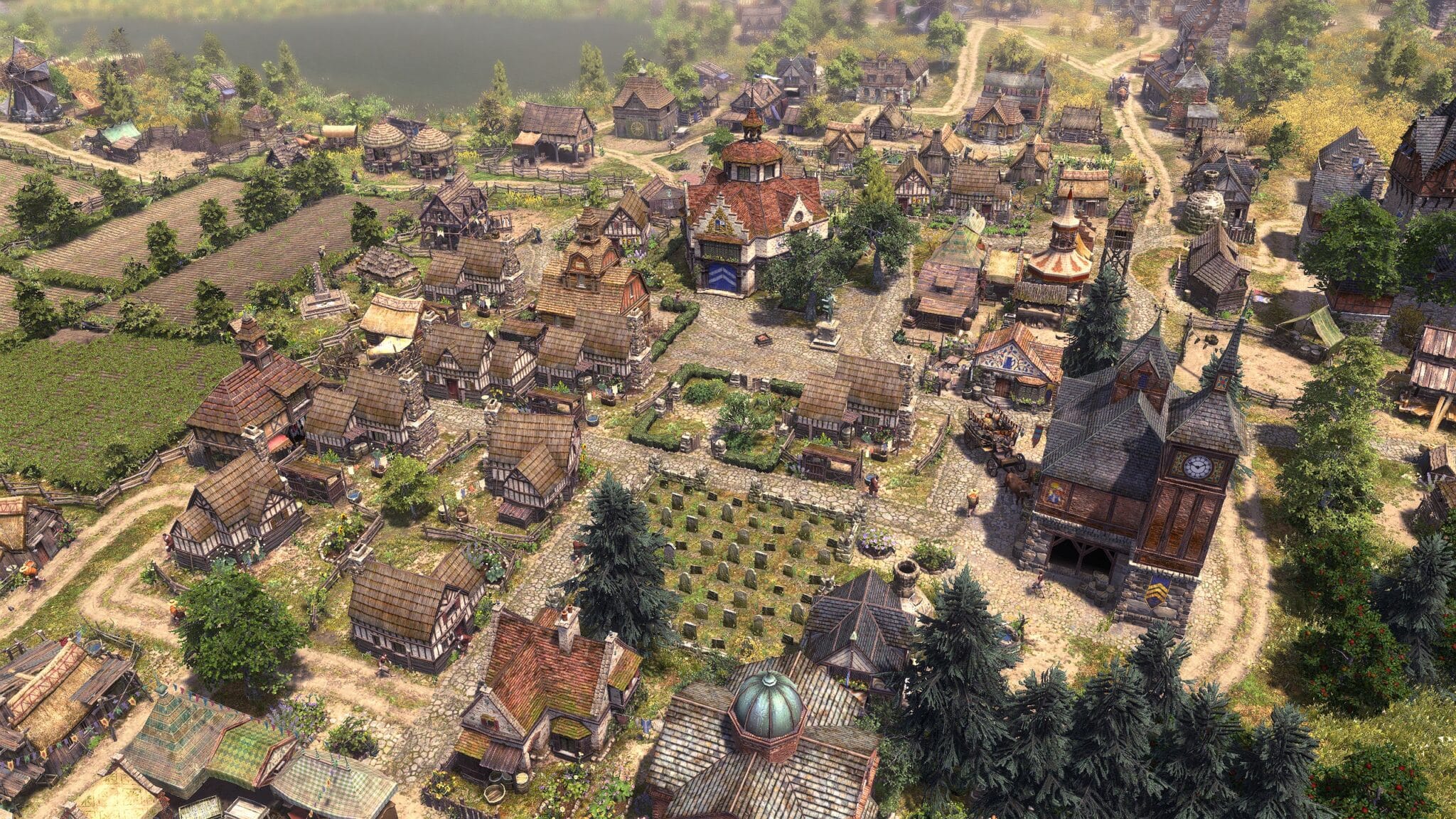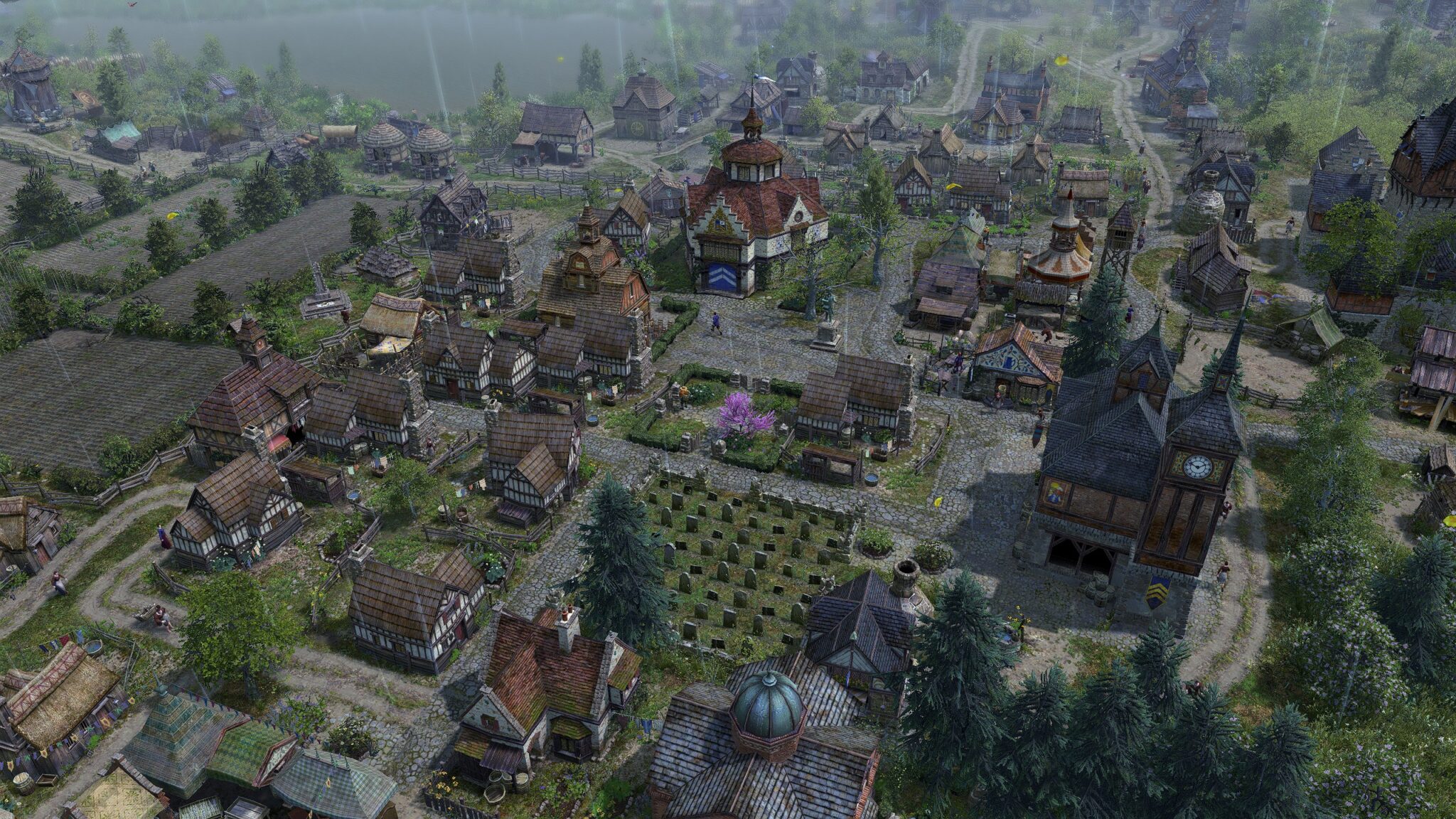The makers of Grim Dawn venture into the building genre with Farthest Frontier – and do a really good job. You can find out just how good here in our Early Access test.
It”s a subject full of emotion and passion. The pulse rises, the face turns red with anger. And rightly so. Because honestly, how clueless can you get? I”m talking, of course, about the timeless question of which is the best Anno. Is it Anno 1404 (yes!)? Or is it 1602 (no!)? Maybe it”s the new Anno 1800 or one of the future Annos?
It”s not an Anno!
Even though I just compared Farthest Frontier to Anno, there are quite significant differences. Because the indie title is only comparable to Anno in terms of settlement building and population advancement mechanics. Otherwise, it is more of a colony simulation with light survival elements, like Foundation or Banished. Here, each inhabitant is simulated, has a name, a job, work routes and a home.
The people also age and die at some point, at the same time new inhabitants are born. However, a recognisable family system is not yet depicted. Although there are a few children, they are not allowed out of the house, they only exist as a small portrait in the flat menu. The desires of an inhabitant of this idyllic medieval world are thus limited to the satisfaction of asexual needs: food, drink, sleep, education, entertainment and a beautiful environment.
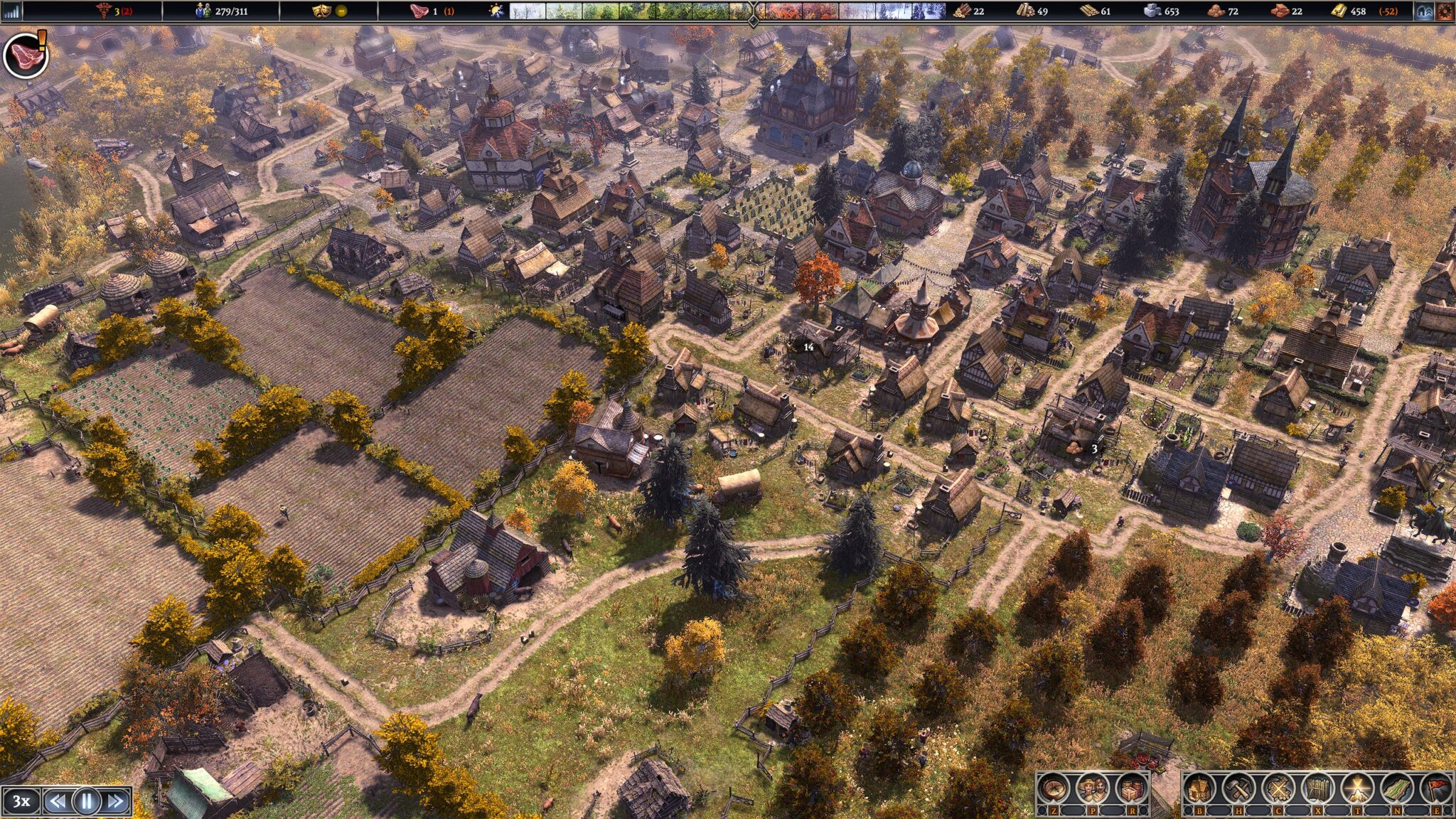
Table of Contents
A year with Nirria
To illustrate what this means and what working in Farthest Frontier is all about, we follow the barefoot steps (the shoemaker is overworked at the moment) of Nirria, a miller: the 18-year-old lives with three others in a neat hut and commutes between it and her mill on the other side of the village. She does not have to worry about shopping at the market, the other inhabitants of the house take care of that. Since there are only two millers in the whole village, she is probably too busy to walk to the market herself anyway, even if it would be on her way to work anyway.
When Nirria arrives at her mill, she grinds ten or twenty bags of flour in no time, then it”s back home. Because there is no day-night change in Farthest Frontier, this process does not follow any particular timeline. How much is produced therefore depends largely on the length of the work route and, of course, on the availability of grain. Nirria has to collect it herself from the granaries.
And even if the heavy tools are missing, without which the mill can no longer grind, the young woman has to provide supplies herself. If the hard-to-make piece of technology is not available, the mill just stands still and Nirria idles around her house. She only becomes active when the food in the house runs out, then she sometimes wanders through the village to find something edible.
People don”t change – they just want more
At this point an explanatory insertion now suggests itself before I go into more detail about the other needs of a resident. For Farthest Frontier mixes two well-known systems here, which only make sense in interaction.
Attractiveness
As in Anno, residents, or more precisely their houses, can move up. If a residential area offers enough attractiveness, the residents upgrade their homes on their own. This attractiveness is made up of several factors: Access to different types of food, luxury resources, fresh water and service buildings such as the inn, the school, the theatre and a healer. While some production buildings, such as the smelly tanneries, lower the attractiveness, it is additionally increased by decorative objects.
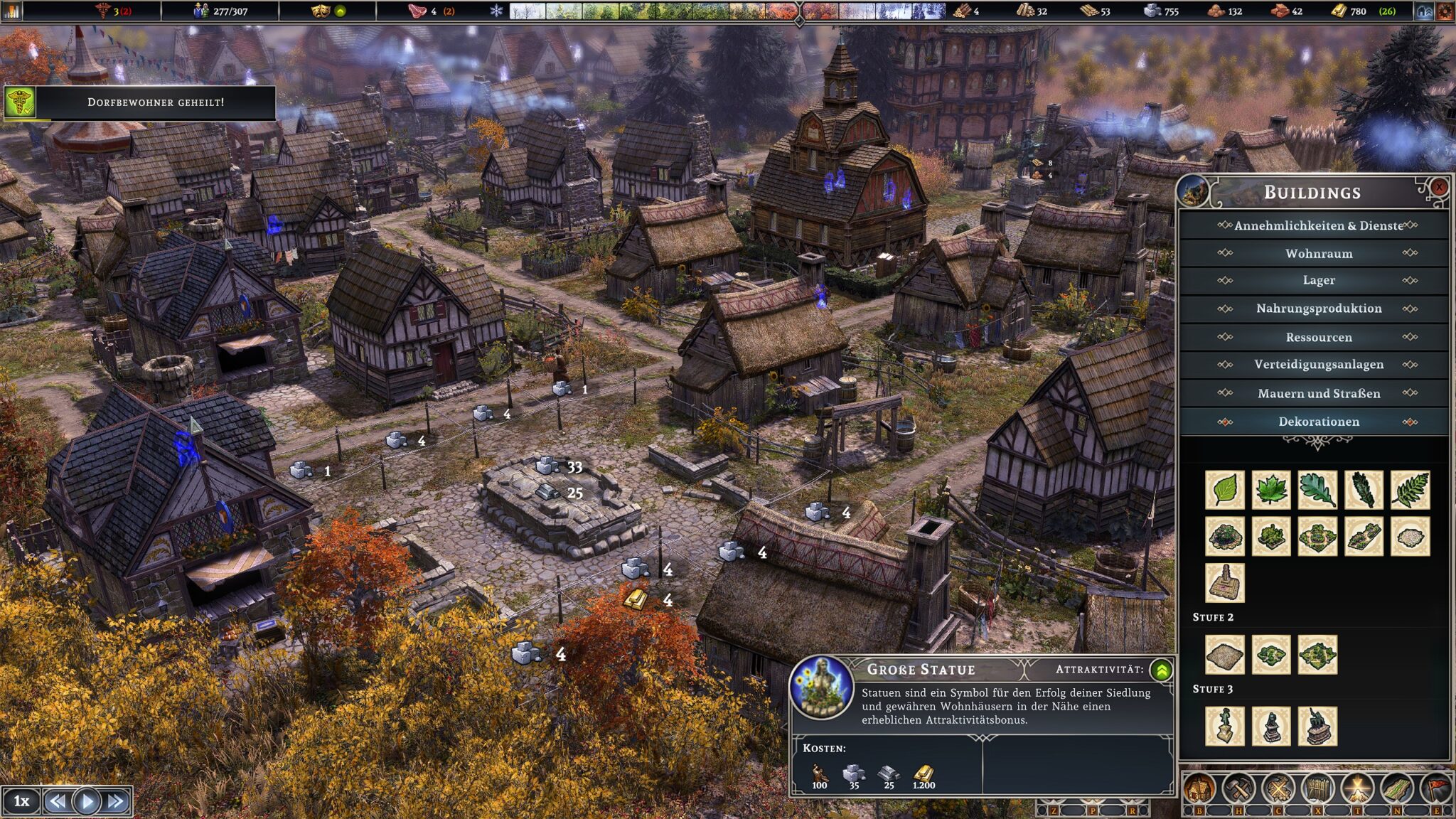
Only when you have a certain number of advanced dwellings (currently there are four levels: hut, homestead, big house, manor house) can you upgrade your village centre, which in turn unlocks new buildings. In addition, you will get more taxes from higher level houses, which also offer a little more living space.
Needs
The inhabitants do not rise in social rank as in Anno, so there is no class of aristocrats or peasants, but their needs increase nevertheless. So, in addition to the variety of food, there is, for example, the desire for good clothing, candles, furniture and entertainment. It therefore becomes increasingly difficult to satisfy the inhabitants. How happy the inhabitants are in your city in turn influences how many immigrants the city attracts, how many offspring are born, and it directly affects the productivity of the inhabitants. Unhappy people work less effectively.
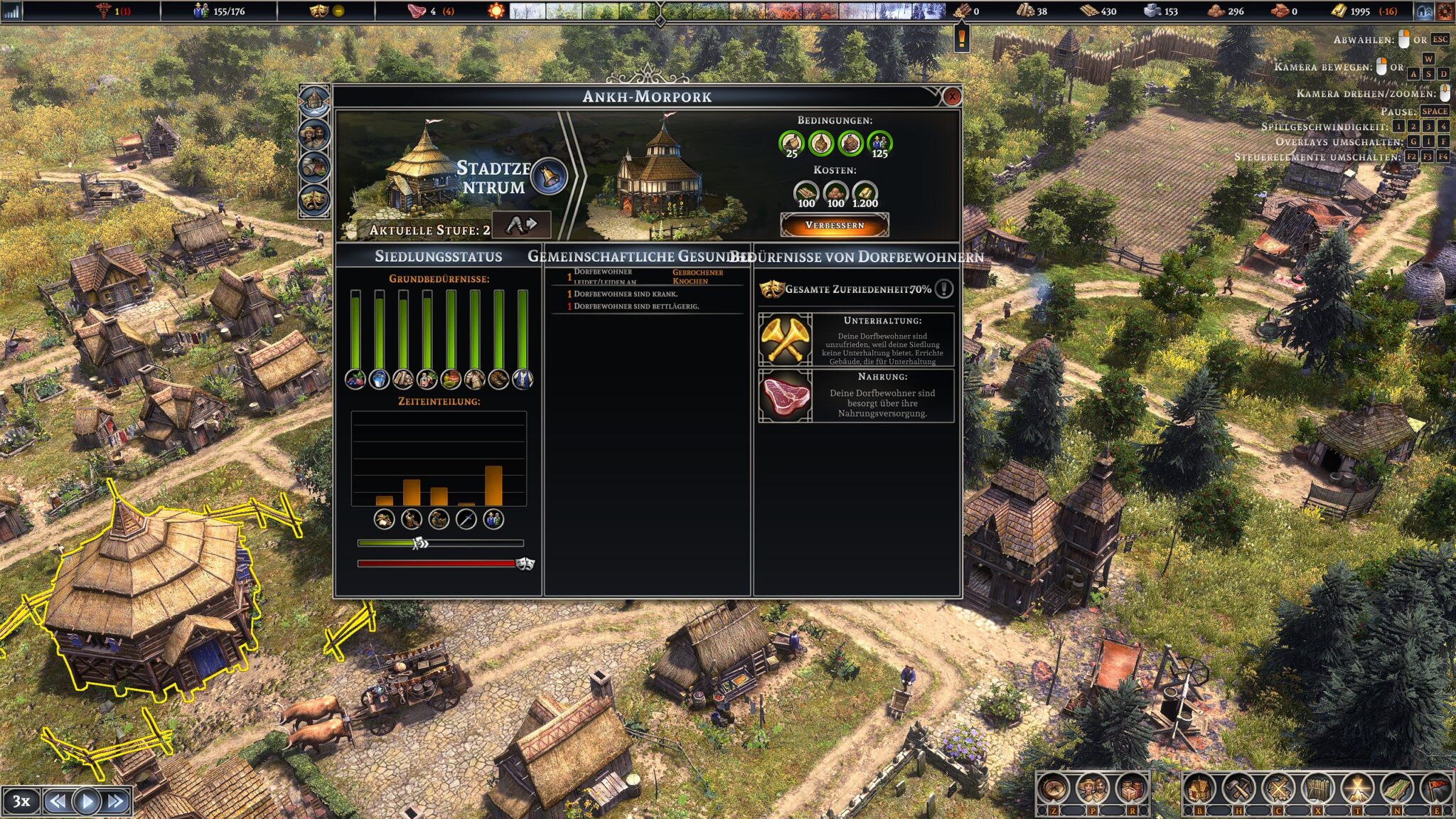
Culture and Social Affairs
And so back to the miller Nirria. If you follow her everyday life, you notice that the simulation is not (yet) perfect. For the good woman profits from the tavern and the theatre in the neighbourhood without ever really going there. But maybe this is an attempt to depict reality over-realistically. After all, let”s be honest, how many people like to have cultural and social facilities in their neighbourhood but then never go?
To produce all the products demanded by the more sophisticated inhabitants like Nirria, you now have to build up an extensive economy with multi-level commodity chains. The easiest step at first seems to be the provision of food variety, but it is not quite that simple. After all, the devil is in the detail.
The diversity of the landscape
When you start a new game, you have the choice between four map types: dry highlands, alpine valleys, lowland lakes, steppe or random, where everything is mixed. Depending on the map, you will be offered different natural resources. In the barren highlands you will find ore deposits everywhere, but little food and trees. In contrast, the lowlands of the lowland lakes, for example, offer plenty of fishing grounds.
If you are allowed to place your village centre anywhere at the beginning of the game, you should make sure that all essential resources are available in the immediate vicinity. Wild animals, collectible food such as berries, bird eggs or wild lettuce are a must. You also need wood, clay and ideally some iron and coal.
Complex like the Farming Simulator
Over time, however, these natural resources will no longer be enough, and you will have to start farming and raising livestock. While you can only keep cows (which you have to buy from traders beforehand), the rest of the farming is unexpectedly complex and extensive.
You don”t just plant fields. You also have to consider the soil, the climate and the fertility. You choose what to grow and when for each field in a three-year cycle. Some crops, such as wheat, need almost the full growing season, while beetroot and beans, for example, mature more quickly so that something else can grow in the same year.
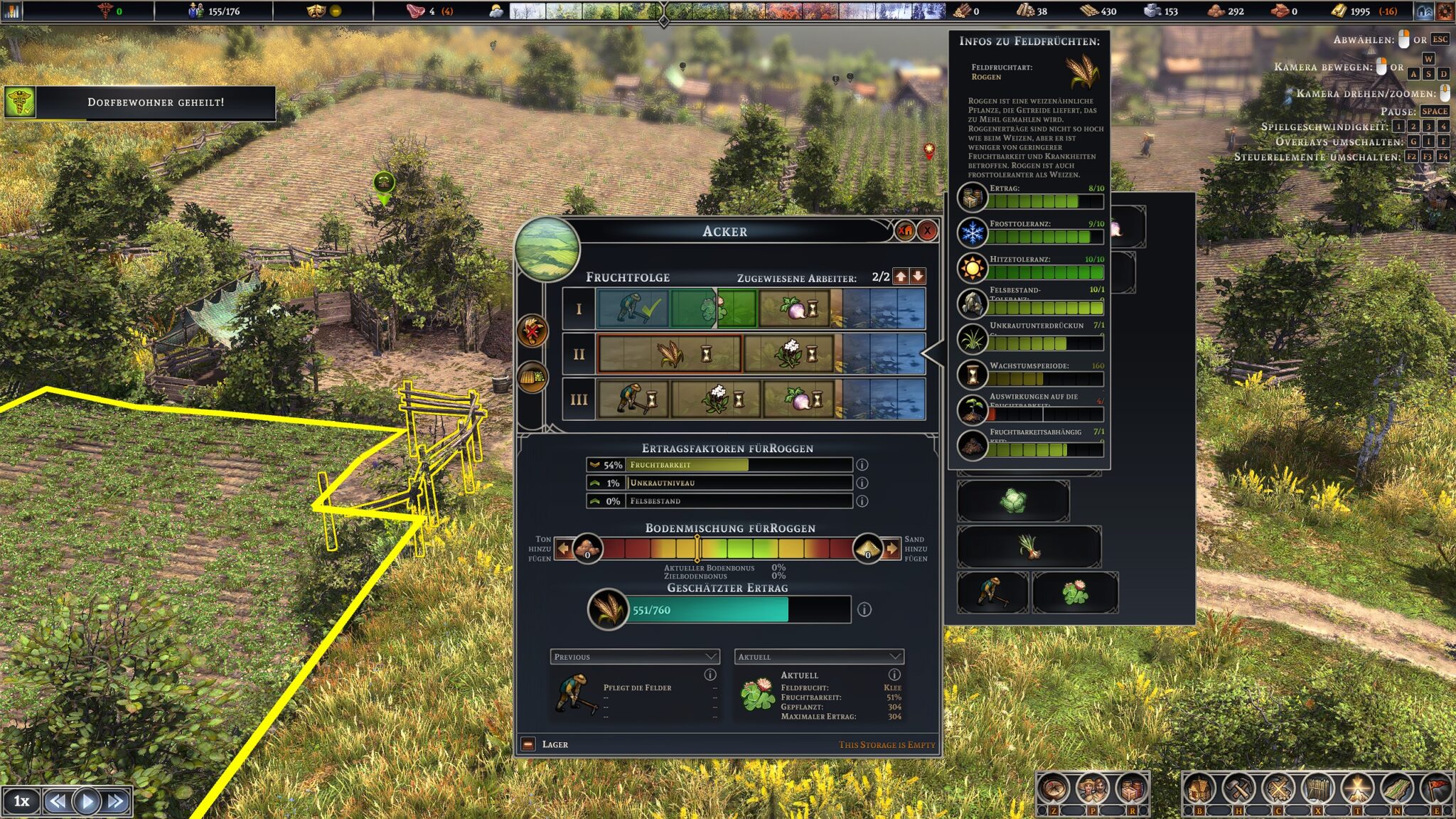
Now, different plants have different characteristics, some tolerate heat better than others, some want more sandy soils, others loamy. Some suppress weeds better, but leach the soil more, slowly reducing fertility. In order to counteract this, you have to repeatedly include arable phases and plant clover, for example, which gives the soil a breather.
By having the settlement”s waste collected on the compost heap, you can also spread fertiliser on the fields from time to time to give fertility a boost. When farming in Farthest Frontier, you always have to balance different factors and requirements. You want as much food diversity as possible with high yields and at the same time you don”t want to deplete the soil.
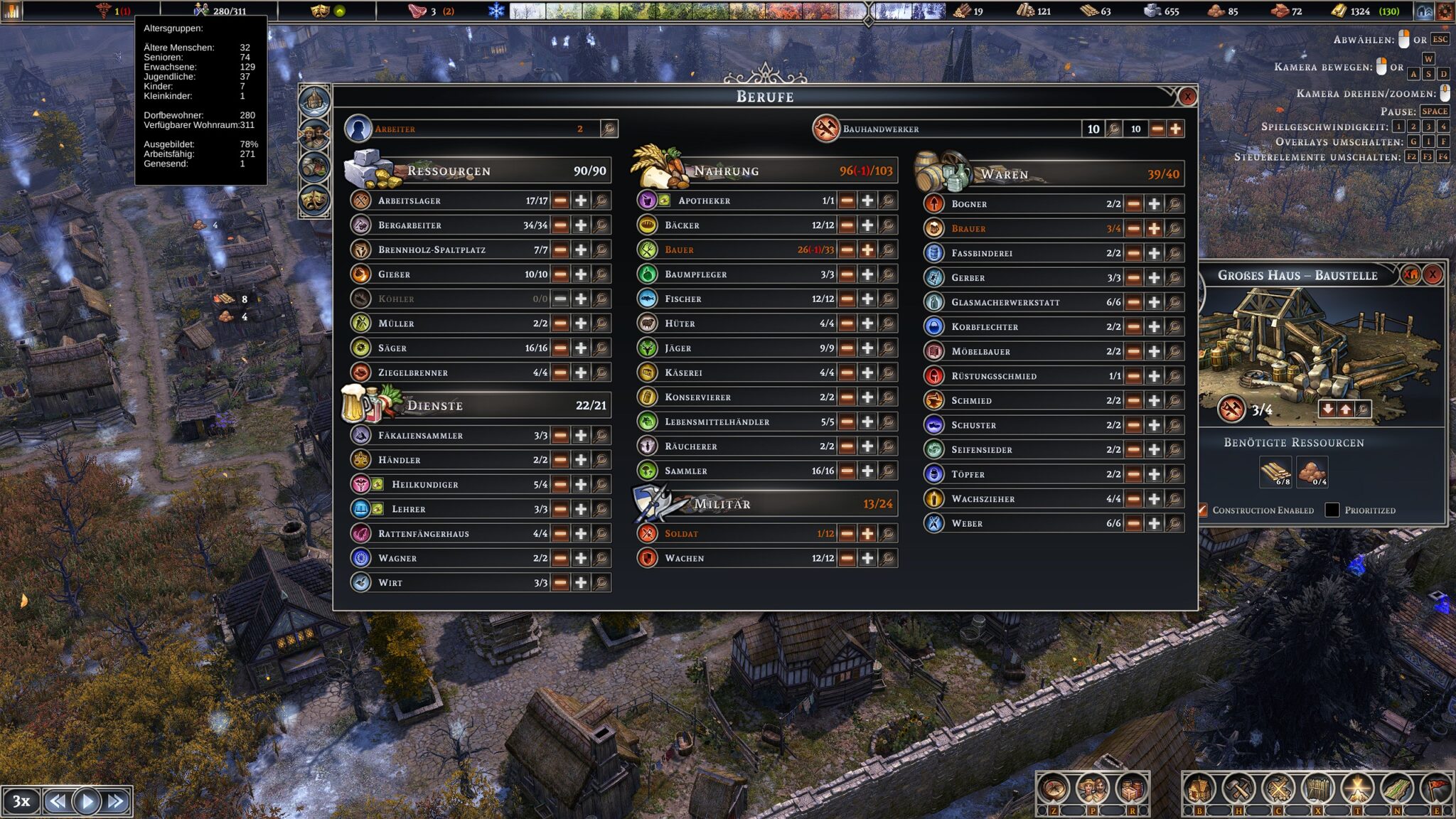
Holding animals, on the other hand, is infinitely easier. You allocate pasture for the cows and support the farm with fodder from the fields. You manually determine how large the herds should be, when animals should be slaughtered and whether they should be milked. The meat either goes directly to the households or is smoked beforehand, while the milk is either drunk or turned into cheese in the cheese dairy.
Life is about food
And of course, as in any good medieval village, you”ll have bread baked and beer brewed. For the latter, the brewers of Fahrest Frontier want some honey, which the beekeeper provides along with wax for candles. If there is a lake nearby, fish is added to the menu. However, since the game is stingy with the production quantities, the food stores rarely overflow, so that this branch of the mostly self-sufficient supply always takes up most of the working time.
“Mostly self-sufficient” means that most of the time you can manage without the travelling traders who always stop at your trading post. But not completely. For example, you can only get your first cows through trade. And you also have to buy your first heavy tools, because the blacksmith is only unlocked from level three of the village centre, but the mill should have started operating before then.
Trade makes you rich…
The traders are also your main source of gold income. Because tax generation is currently far too low to make much progress. Only the sale of surplus goods generates profits that can finance larger construction projects. Unfortunately, not every trader wants the same thing, so you can”t focus your economy on a specific good, because it may not be asked for again for years.
And speaking of construction financing: While the simpler buildings only require construction raw materials such as wooden boards, stones and bricks, more important buildings and their upgrades cost a lot of gold.
..and if something is missing, you”ll just have to wait
After all, you don”t have to have the resources and funds ready when you commission a building. Instead, idle workers begin by bringing available materials to the construction site and gradually pull up the buildings in pretty intermediate steps, as far as they can go. In order to be able to better manage several construction projects running at the same time, you can set the number of workers and the priority for each construction site individually. Some work, such as laying out fields or field paths, requires muscle power alone; raw materials are not necessary.
However, the more advanced chains of goods such as clothing, pottery, glassware, furniture, candles, preserves, barrels, tools, weapons and armour require more raw materials and manpower. Canned goods, for example, require fruit, vegetables, glass, sand and coal for their production. And even firewood must first be felled, delivered and split.
A small revolution on the street
But take another step back, because I almost just passed over the real hero of Farthest Frontier: the street tool! In Farthest Frontier, buildings don”t have to be connected by roads like in Anno or many other building games. You should do it anyway, because it helps the villagers get from A to B faster, and as should be clear by now, the time it takes to get to work is relevant to the settlement”s production efficiency.
The special thing about the roads, however, is that they don”t just have to run at rectangular angles. Although the buildings have rectangular dimensions, the roads still form slight curves and corners. You can also build roads straight in towns, but the game automatically generates deviations for longer stretches.

Even where paths join, they don”t just end at right angles to each other, but usually merge organically (“usually” because the tool is not yet perfect and makes minor mistakes). This way you waste a little space, but the overall impression of the villages is much better. And that is no exaggeration. Look at the clinical grid pattern of Anno cities or similar games and then put a screenshot of Farthest Frontier next to it. This small change is a revolution in the Schönbau genre! Other games have done it before, but I have never seen it done this well before.
Detailed, beautiful and always in flow
Generally, Farthest Frontier is just beautiful, not only because of the more organic street layouts. The building models are extremely detailed, many have slightly different versions. Birds fly around in the air and animals roam the forests. Nature slowly grows back where your loggers left willows, first with dense bushes, then with trees again.
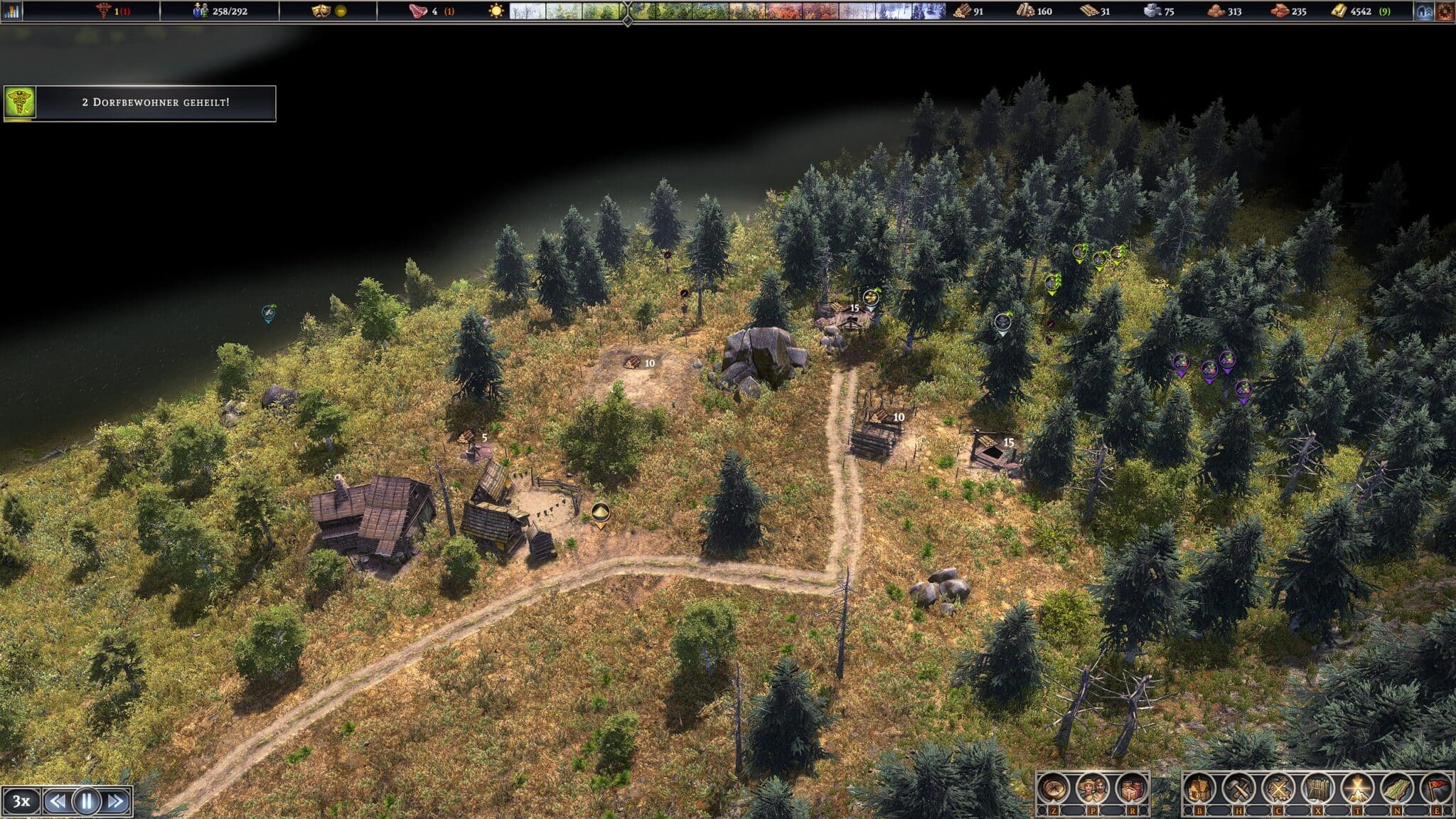
Fruit trees blossom in spring and have thick fruit on their branches in summer. Plants in the fields thrive and are harvested. Small gardens and flower boxes beautify the courtyards, and of course you also have the opportunity to decorate the city even more. With paved squares, statues, fences, walls, gardens, flowers and trees in all forms.
Vivaldi would have been delighted
And then there is also the weather and the seasons, which are depicted as beautifully as rarely in a game. The mood of the light changes as it gets colder, leaves drift in front of the screen in autumn, while the trees become bare. In winter, more and more snow covers the paths and the inhabitants increasingly stay at home, so that the village seems almost extinct. Then, in spring, the farmers go out to the fields or put out a barn because lightning has struck during a spring thunderstorm.
In summer, the sun blazes from the sky while oxcarts bring materials from a distant mining outpost to the walled town. The idyll is perfect. In this respect, not even the Anno series can compete with Farthest Frontier.
The world is still populated by clones
The Early Access version makes concessions in the animations and inhabitants. Here the game is clearly not yet finished. In many businesses, no one is working visibly yet; there is only a walking and a running pattern, which on closer inspection is also flawed because the inhabitants often hover above the ground. Children, the elderly or different body sizes and faces are completely absent.
The world of Farthest Frontier is thus populated by a horde of female and male clones, because even the clothing is always the same and only differentiates between summer and winter garb. This does take away some of the charm of the game, but given the attention to detail in the rest of the graphics, I”m confident that there will be more to come.
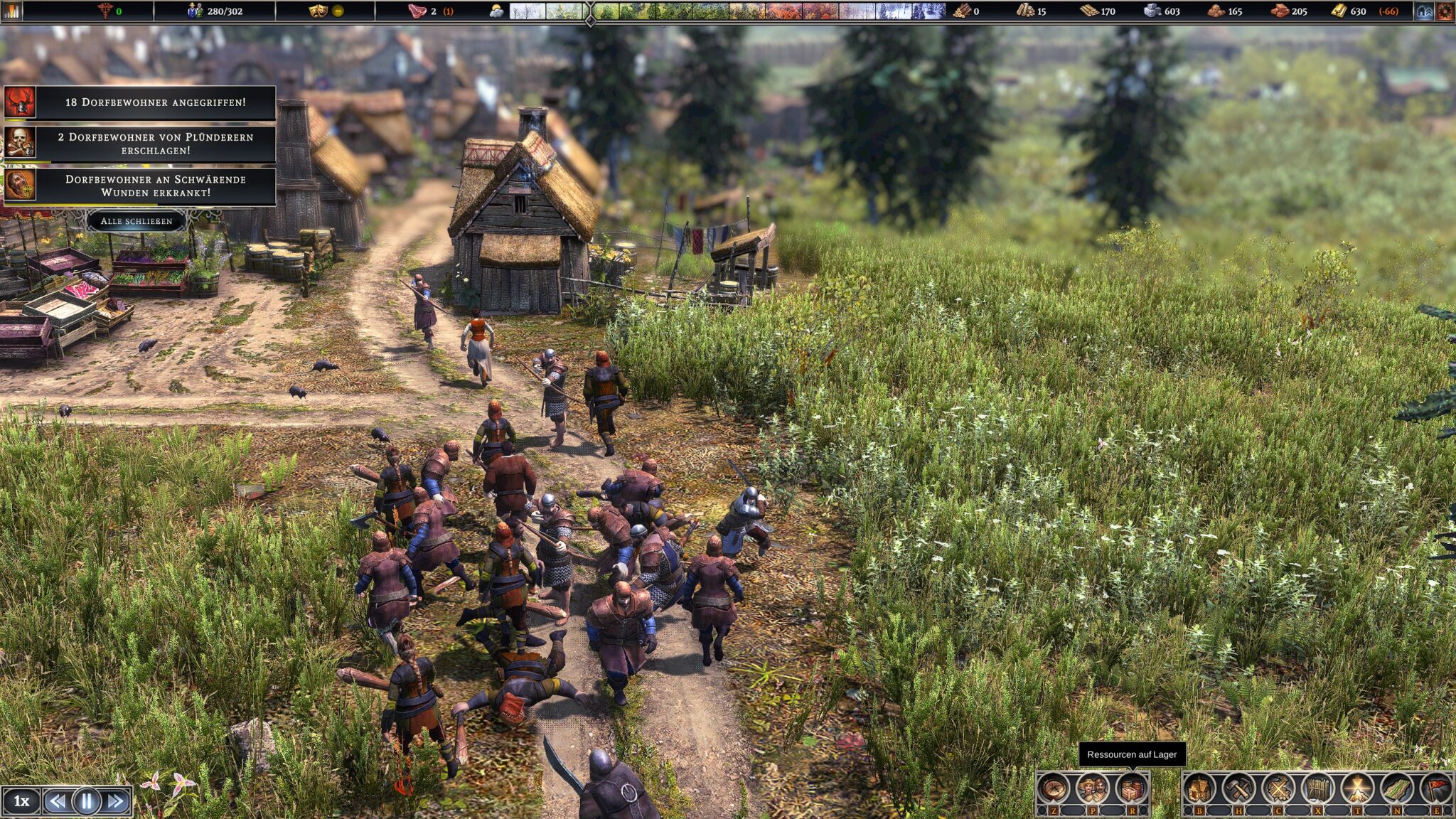
Little optimisation, many options
Crate Entertainment must also improve the performance optimisation. Even on a fairly good system like mine, the game rarely got above 35 FPS and regularly has significant loading jerks during certain events or pop-ups.
The loading times when saving are also relatively long at one or two minutes. Here, the title pays tribute to its detailed graphics. The settings in the menu are all the more exemplary for this, offering many options from automatic saving intervals and scalable interface to shadow quality and depth of field to the precise configuration of in-game notifications.
Who wants to go to the labour camp?
The sound design, on the other hand, is not always optimal. The background music seems familiar relatively quickly, and the sounds for certain events and occurrences are a little too intrusive. Other construction games have their noses or ears in front in this respect.
The war is chaos instead of art
The combat system is also capable of development, which I have so far underplayed because it is honestly hardly fun and has little to offer. So far, all warlike action consists of defending the village from raiders, who attack in greater numbers (and all look the same) as the game progresses.
Theoretically, you can call on the normal inhabitants for defence, but they hardly stand a chance, especially against heavily armed warriors. Instead, you can build a city wall with gates and some defence towers. To do this, train a few soldiers in the barracks and fight the invaders.
But since soldiers are quite expensive to maintain and the production of weapons can only start very late in the game, the looters often break through the city wall, torch a few buildings and steal some goods and gold from the stores. In the end, however, this is not so bad because your own villagers will hardly suffer any damage if you ring the village bell.
Otherwise, there are a few wolf and boar nests on the map to smoke out, but they are hardly worth mentioning.
The spirit is willing, but the contents are weak
Now it can be said with some justification that the vast majority of construction games have little to offer in this respect. The biggest shortcoming of Farthest Frontier, however, is that the same is true of the rest of the superstructure.
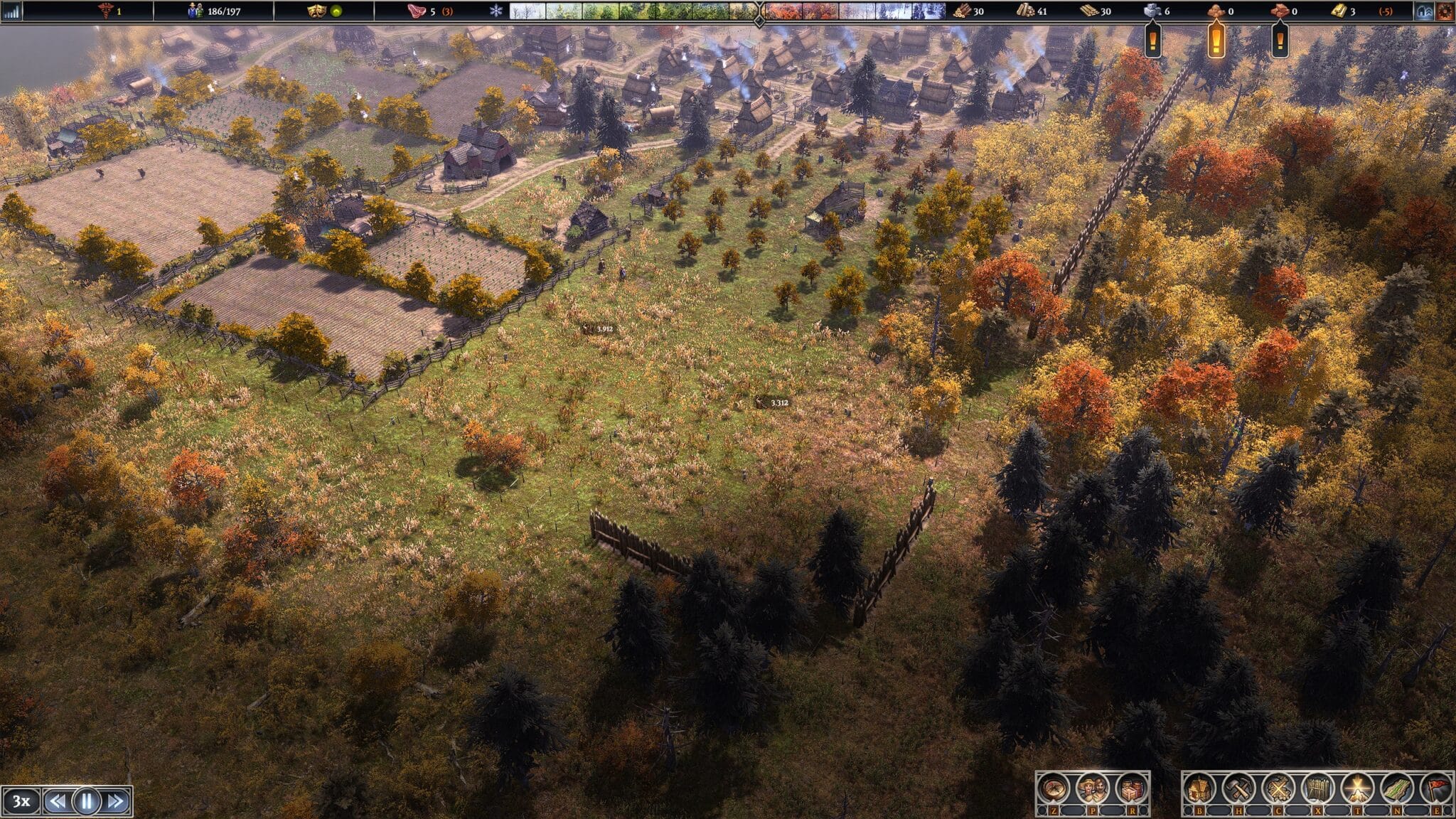
That”s because it”s practically non-existent. While Anno offers voyages of discovery and trade routes, allows interaction with the AI, provides quests and lets you build monuments to broaden the overall gameplay and offer variety, Farthest Frontier does none of that yet. There are no special objectives and nothing to discover. The people in your village have no voice of their own apart from contentment, not even uprisings can occur. There is no seafaring at all, not even rivers. And exotic goods are also largely absent.
In itself, I would say, man, they”ve made such a good game so far, there”s bound to be more to come. But the game”s Steam page talks about an Early Access phase of four to eight months. Even if I assume they”ll overrun the time, like virtually all titles at this stage of development, that”s hardly long enough to include the very big gameplay additions. Of course, I remain open to the possibility, not knowing what else is in the pipeline half-finished, but scepticism prevails.
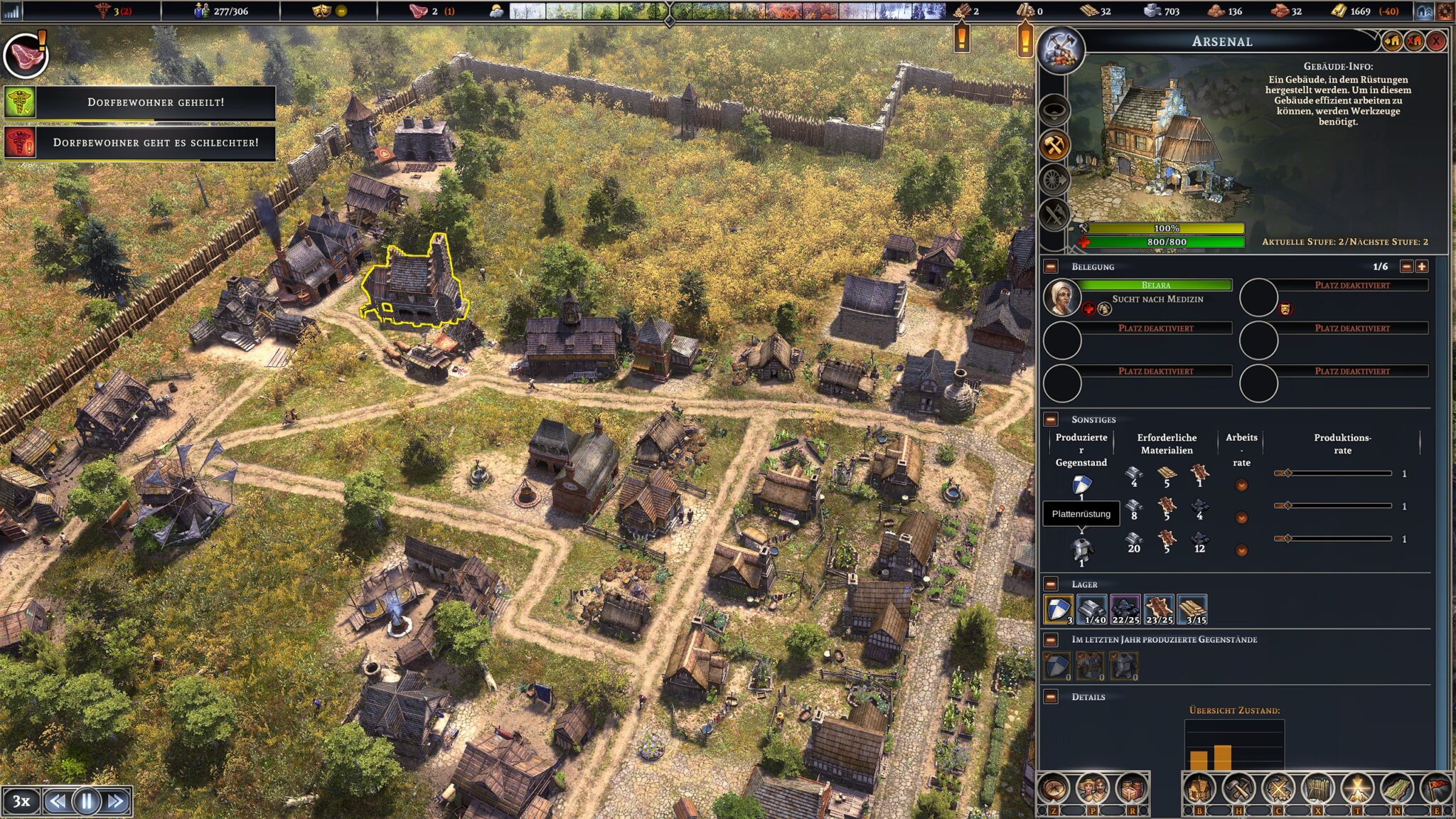
This is already very good
And yet Farthest Frontier is also such an asset to the genre. It”s just fun to build a village from scratch in this world, to see it change over the seasons and grow larger as the years go by.
As resources like clay, sand and iron mines dry up, and perhaps only a distant mountain holds larger gold deposits, I am forced at some point to build distant outposts with temporary housing so that workers don”t have to keep commuting all the way home to town. In many different ways, this creates a cityscape that is not created on a drawing board, but is subject to many constraints and possibilities and thus feels much more natural than in other games.
Since the balancing has also been quite good so far, there is always something to do. At least in the first ten hours, there is never a feeling of boredom. Only after that, when the village centre is fully developed, does Farthest Frontier offer something only to the beautiful farmers or those of you who can set your own goals. An “Achievements” tab in the main menu already indicates that the developers have something planned here, but nothing has been implemented yet.
Preliminary score box
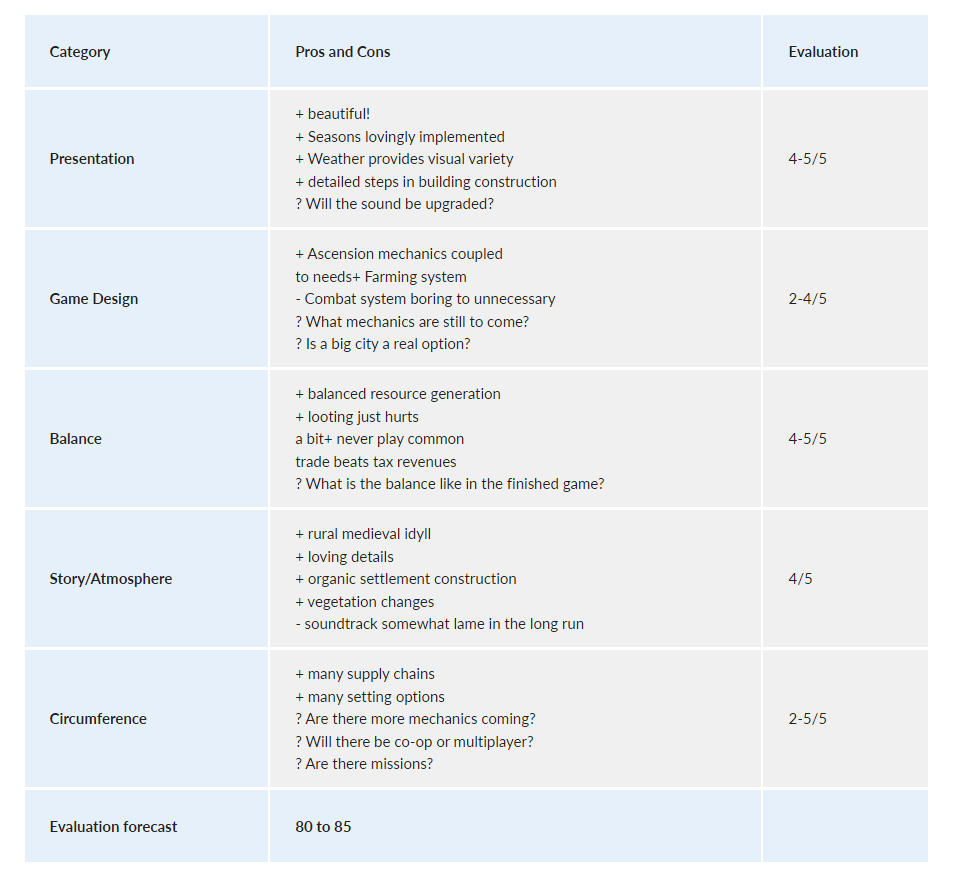
Editorial conclusion
I am curious whether you will agree with me. The newest part of the Ubisoft series has a lot more content to offer, but the one simple trick with the winding roads makes settlements in Farthest Frontier look much more organic. And now that I”ve seen it, I never want the rectangular cities from all the other genre competitors back.
Otherwise, however, the picture-perfect building title from the makers of Grim Dawn is not quite in the same league as Anno. Although I like the fact that Crate Entertainment has concentrated on skilfully implementing the core features around the supply and construction of a city, after about ten hours it becomes increasingly apparent that this is “only” an Early Access title.
I am therefore curious to see how Farthest Frontier will develop in the coming months and years and hope that further content will expand the replay value even further. But one thing is certain: Farthest Frontier is already one of the best building games on Steam, especially if you like an idyllic medieval scenario.

